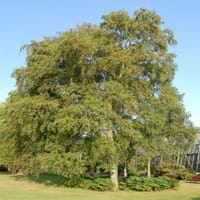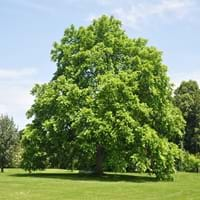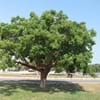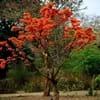Life Span
Perennial
Biennial
Origin
Northern Europe, Russia/Siberia
North America, United States, Northeastern United States, Mid-Atlantic United States, North-Central United States, Central United States, Canada
Types
Young's weeping birch, Ornäs Birch
Not Available
Habitat
Sunny Edge, Woodland Garden Canopy
Anthropogenic, Floodplains, Forests
USDA Hardiness Zone
2-7
3-9
Sunset Zone
A2, A3, 1a, 1b, 2a, 2b, 3a, 3b, 4, 5, 6, 7, 8, 9, 10, 11, 12, 14, 15, 16, 17, 18, 19, 20, 21, 22, 23, 24
1a, 1b, 2a, 2b, 3a, 3b, 4, 5, 6, 7, 8, 9, 14, 15, 16, 17
Habit
Pyramidal
Oval or Rounded
Flower Color
Green
Yellow green
Flower Color Modifier
Bicolor
Bicolor
Fruit Color
Black
Green, Brown
Leaf Color in Spring
Light Green
Light Green
Leaf Color in Summer
Dark Green
Green, Dark Green
Leaf Color in Fall
Light Yellow, Yellow green
Yellow, Gold
Leaf Color in Winter
Not Available
Not Available
Leaf Shape
Double-toothed, serrated
Pinnate
Plant Season
Spring, Summer, Fall, Winter
Spring, Summer, Fall
Sunlight
Full Sun, Partial Sun
Full Sun
Type of Soil
Loam
Clay, Loam
The pH of Soil
Acidic, Neutral, Alkaline
Acidic, Neutral, Alkaline
Soil Drainage
Average
Well drained
Bloom Time
Spring
Late Spring, Early Summer
Tolerances
Wet Site, Drought
Not Available
Where to Plant?
Ground
Ground
How to Plant?
Seedlings
Seedlings
Plant Maintenance
Medium
Medium
Watering Requirements
Water more in summer
Average Water Needs, Do Not over Water, Requires regular watering
In Summer
Lots of watering
Lots of watering
In Spring
Moderate
Moderate
In Winter
Average Water
Average Water
Soil pH
Acidic, Neutral, Alkaline
Acidic, Neutral, Alkaline
Soil Type
Loam
Clay, Loam
Soil Drainage Capacity
Average
Well drained
Sun Exposure
Full Sun, Partial Sun
Full Sun
Pruning
Remove damaged leaves, Remove dead branches, Remove dead leaves
Remove damaged leaves, Remove dead branches, Remove dead leaves
Fertilizers
General purpose granulated 30-10-10 fertilizer
All-Purpose Liquid Fertilizer
Pests and Diseases
Anthracnose, Birch Leafminer, Bronze Birch Borer, Slime Flux
Red blotch
Plant Tolerance
Drought
Not Available
Flowers
Showy
Insignificant
Flower Petal Number
Single
Not Available
Fragrant Leaf
No
Not Available
Fragrant Bark/Stem
No
Not Available
Foliage Texture
Medium
Coarse
Foliage Sheen
Glossy
Matte
Attracts
Butterflies, Insects, Moths
Birds, Squirrels
Allergy
Pollen
Gastric, Pollen
Aesthetic Uses
Used in parkland
Not Used For Aesthetic Purpose
Beauty Benefits
Not Available
Good for skin
Environmental Uses
Air purification
Air purification, Shadow Tree
Medicinal Uses
anti-inflammatory, Antirheumatic, Antiseptic, Astringent, Diaphoretic, Diuretic
Dysentry, Intestinal irritations, Small pox, Stomach pain
Part of Plant Used
Flowers, Inner Bark, Leaves, Sap
Sap, Seeds
Other Uses
Used as a thickener in soups, Used as essential oil, used for making charcoal, Used in making tea
Application in Furniture, Decorative veneers, flooring, paneling, Herbicide
Used As Indoor Plant
No
No
Used As Outdoor Plant
Yes
Yes
Garden Design
Feature Plant, Screening / Wind Break, Shade Trees, Street Trees
Edible, Shade Trees
Botanical Name
BETULA pendula
JUGLANS cinerea
Common Name
Common Birch, European White Birch, Silver Birch
Butternut
In Hindi
Silver Birch
Butternut Tree
In German
Weißbirke
Butternut Baum
In French
Silver Birch
noyer cendré
In Spanish
Abedul de plata
árbol de nogal
In Greek
Silver Birch
Butternut Δέντρο
In Portuguese
Silver Birch
Árvore Butternut
In Polish
Silver Birch
butternut Drzewo
In Latin
Argentum Birch
Butternut ligno
Phylum
Magnoliophyta
Magnoliophyta
Class
Magnoliopsida
Magnoliopsida
Order
Fagales
Juglandales
Family
Betulaceae
Juglandaceae
Clade
Angiosperms, Eudicots, Rosids
Angiosperms, Eudicots, Rosids
Tribe
Not Available
Not Available
Subfamily
Betuloideae
Not Available
Number of Species
Not Available
Not Available
Season and Care of Silver Birch and Butternut Tree
Season and care of Silver Birch and Butternut Tree is important to know. While considering everything about Silver Birch and Butternut Tree Care, growing season is an essential factor. Silver Birch season is Spring, Summer, Fall and Winter and Butternut Tree season is Spring, Summer, Fall and Winter. The type of soil for Silver Birch is Loam and for Butternut Tree is Clay, Loam while the PH of soil for Silver Birch is Acidic, Neutral, Alkaline and for Butternut Tree is Acidic, Neutral, Alkaline.
Silver Birch and Butternut Tree Physical Information
Silver Birch and Butternut Tree physical information is very important for comparison. Silver Birch height is 1,220.00 cm and width 610.00 cm whereas Butternut Tree height is 1,220.00 cm and width 1,220.00 cm. The color specification of Silver Birch and Butternut Tree are as follows:
Silver Birch flower color: Green
Silver Birch leaf color: Light Green
Butternut Tree flower color: Yellow green
- Butternut Tree leaf color: Light Green
Care of Silver Birch and Butternut Tree
Care of Silver Birch and Butternut Tree include pruning, fertilizers, watering etc. Silver Birch pruning is done Remove damaged leaves, Remove dead branches and Remove dead leaves and Butternut Tree pruning is done Remove damaged leaves, Remove dead branches and Remove dead leaves. In summer Silver Birch needs Lots of watering and in winter, it needs Average Water. Whereas, in summer Butternut Tree needs Lots of watering and in winter, it needs Average Water.





